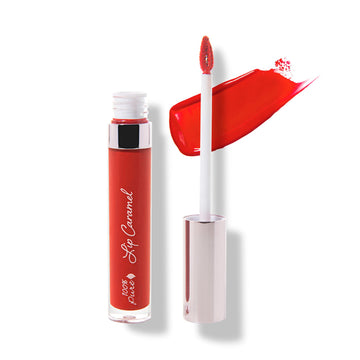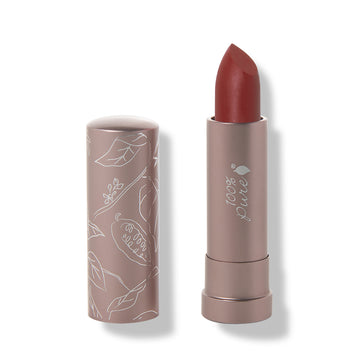How to pick a natural lipstick shade that suits your skin tone
Written by: 100% PURE ®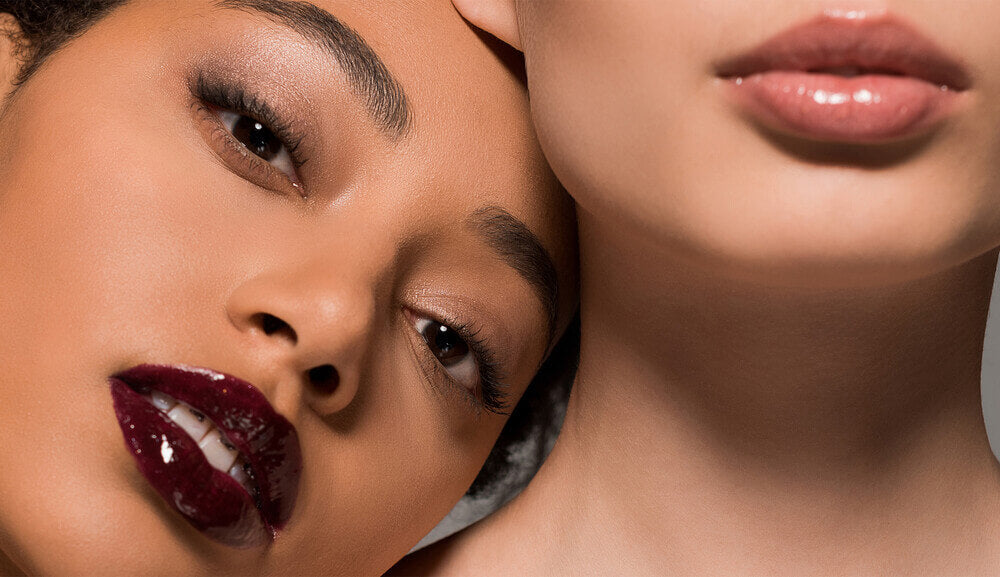
What two things have been hidden all year? For us, it’s our tan – and our lips, hidden beneath face masks. After skipping lipstick for so long, we’re ready to celebrate our pout for a beauty-ful holiday: International Lipstick Day!
We’re breaking down the best way to color match your lipstick to your skin tone, and detailing the top ingredients to avoid while lipstick shopping.
The mouth is one of the most defining features of our face, and accentuating it is a form of artistic expression – but not with just any lipstick. We’re picky about what we put on our mouths, especially considering how much lipstick we inadvertently eat. That’s why we stick to natural lipsticks, free of questionable ingredients.
What are some common lipstick ingredients?
-
Carmine, a pigment used to create red beauty products made from crushed beetles
-
Parabens, known to be endocrine disruptors
-
Guanine, made of fish scales, and commonly used to add a pearlescent shimmer
-
Heavy metals, which can disrupt normal bodily functions
-
Coal tar dyes, which are a toxic carcinogen
This list is why we focus on making natural lipsticks that anyone can enjoy!
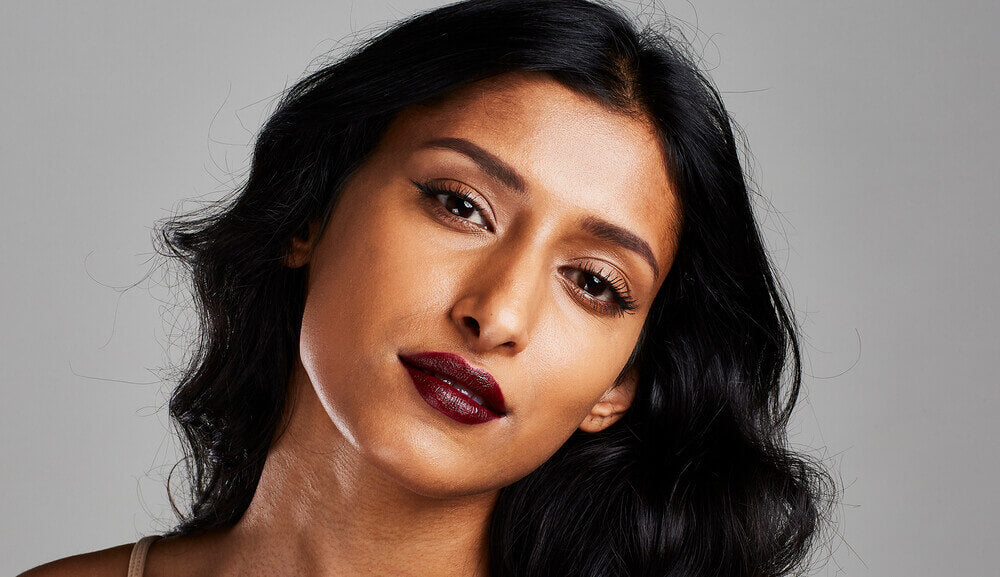
Everyone needs a signature shade of red, but choosing the perfect lipstick shade isn’t as simple as popping on any old color. There’s a complex color theory at play when it comes to matching lipsticks to your skin tone, and it can make or break your look. We’ve shared our full breakdown on the perfect lipstick before, but here are a few quick tips on color matching lipstick shades:
1) Determine undertone
Undertone can be described as the ‘temperature’ of our skin. It presents itself as a golden, olive, neutral, or cool toned hue. The easiest way to determine undertone is to take a glance at the veins on the inner wrist. Veins that glow through green are typically found on warm skin, while veins tinted blue or purple are common with cooler skin tones. A mixture could indicate neutral-toned skin.
We’ve found a lot of luck with lipsticks that have a similar hue to our skin. For example, golden and honey skin tones look stunning in corals and bright, poppy reds. Like speaks to like!
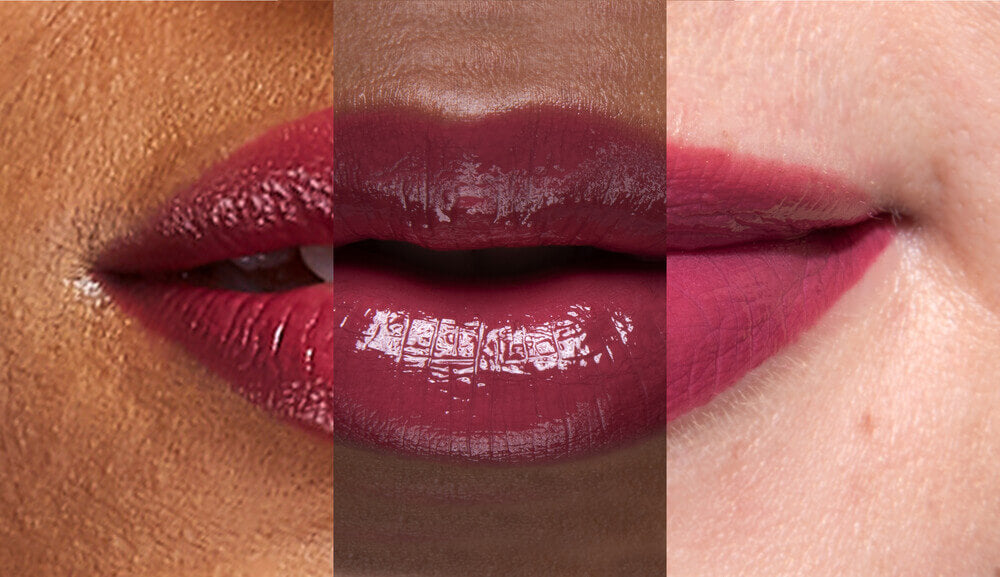
2) Consider skin tone
Now that we have the undertone, we can make more informed lipstick decisions about which ones flatter our skin tone. ‘Skin tone’ is essentially the depth of melanin in our skin combined with our undertone; common skin tones are fair, light, golden, tan, bronze, deep, and rich.
We know that anyone can pull off any look with confidence, as long as they love it – but we’re not always feeling our most confident! We generally find it easier to wear lipsticks in a similar depth to our skin tone, with some exceptions for those dark hues we favor in the colder months. Going for similarly pigmented shades can take some of the guesswork out of picking a flattering natural lipstick.
3) Categorize colors
With our undertone and skin tone figured out, we can now find flattering lipsticks in a variety of color categories. Classic categories include red, berry, plum, peach, pink, and nude.
4) Finishing touch
The finish of a lip product – satin, shine, or matte lipstick – is just as important as the shade itself. The general rule of thumb is that the brighter or more contrasting lip colors are to our skin, the easier they are to wear in a matte finish. Shine in satin and gloss finishes attract light and can change the way a color appears with our skin tone, which is why choosing lipsticks in similar hues and depths makes for a flattering pair.
5) Experiment with glosses
When dipping our toe into a color family we don’t often wear, we find it easier to commit to a lip gloss. It’s like taking the color for a test drive; since gloss colors are often less saturated, they can be more forgiving. It’s easy to layer lip gloss with our favorite lipsticks and liners for a custom look.
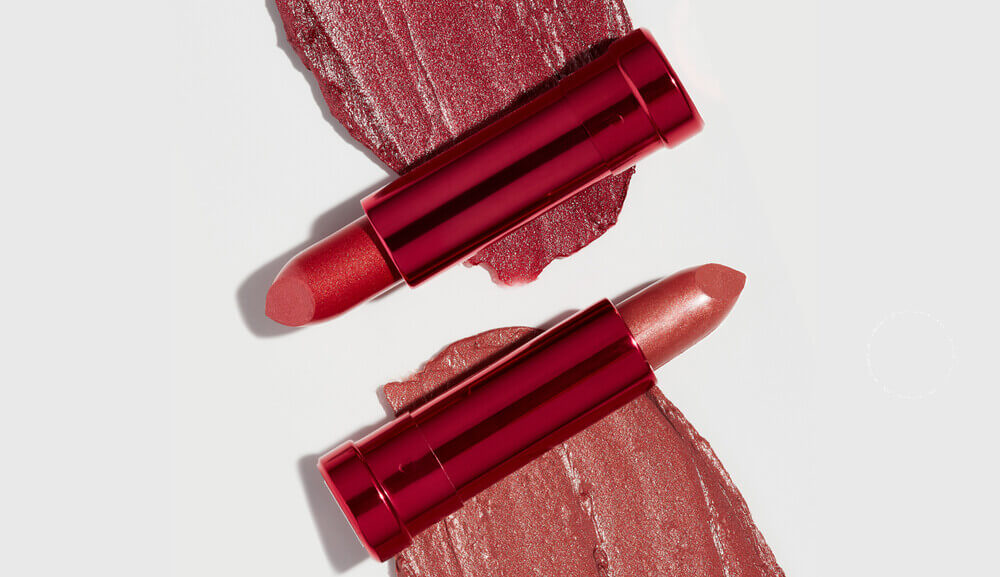
6) Be cheeky
When searching for a signature lip shade, we’ve noticed that the same blush shades we favor tend to be in line with our go-to natural lipstick choice. Take a peek at the blush shade you love and find a cute coral, velvet mauve, or petal pink lipstick to match.
7) Add variety
Once we find shades we feel comfortable with, we add variety with finishes. We like to build collections with sheer to saturated products, from balms and tints to liquid lipsticks. Only love one shade? Keep multiple finishes on hand to mix things up (at least a little).
8) Enhance
The last step is to build a complete lip look that complements your skin tone and lip shape.
Bolder, deeper, and more matte lipstick shades draw the most attention to the shape of the lips.
Glosses and satin lipsticks tend to magnify the lips and make them look larger.
Lip liners, especially in slightly darker shades, create depth and dimension for a fuller, juicier pout.
Layering lip products together can create a totally custom, long-lasting lip tailored to our unique complexion.
Want more lipstick tips? Read on:
- Tags: Makeup
We carefully hand-select products based on strict purity standards, and only recommend products we feel meet this criteria. 100% PURE™ may earn a small commission for products purchased through affiliate links.
The information in this article is for educational use, and not intended to substitute professional medical advice, diagnosis, or treatment and should not be used as such.













